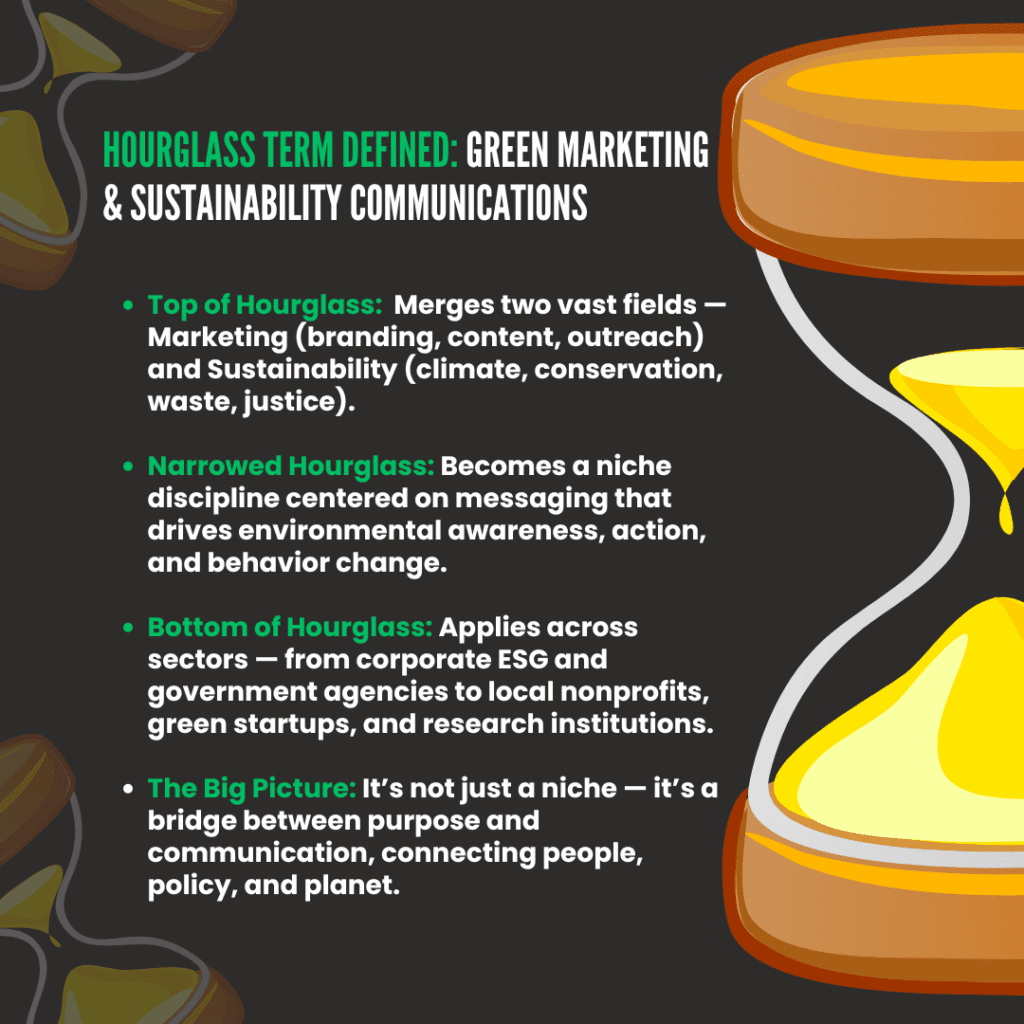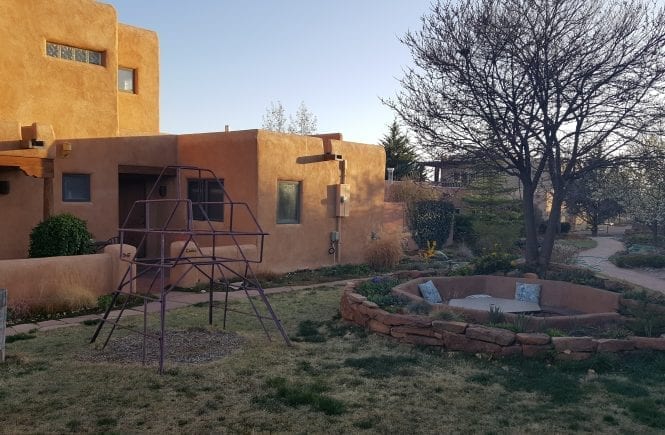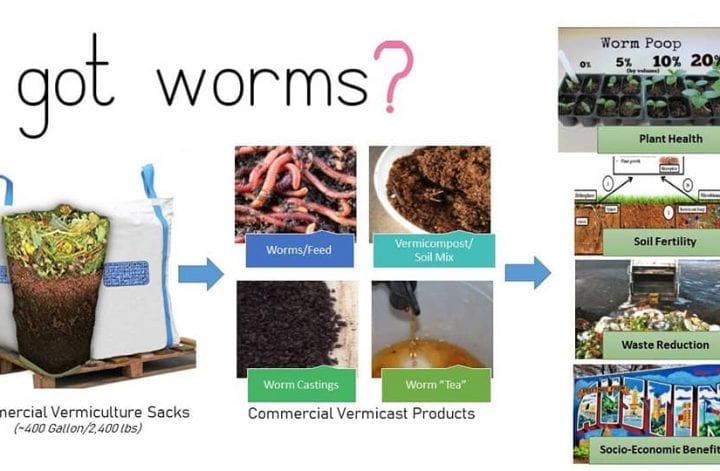In the world of marketing, buzzwords come and go — but “green marketing” and “sustainability communications” are terms that have stuck with me, not just as trends, but as defining themes throughout my career. They’re what I call hourglass terms — concepts that begin broadly, narrow into a specialized niche, and then fan out again to influence a wide range of industries, sectors, and communication needs.
Let me explain — and take you on a journey through how I came to specialize in this growing, evolving, and deeply meaningful space.
What Is Green Marketing, Exactly?
At its core, green marketing refers to promoting products, services, or practices that are environmentally friendly. It’s about more than slapping a green label on a package — it’s a commitment to transparency, sustainability, and often, behavioral change. Green marketing focuses on aligning brand values with environmental ethics, creating campaigns that both inform and inspire.
Sustainability communications, meanwhile, goes beyond the consumer angle. It encompasses the storytelling, messaging, and strategic outreach that organizations use to engage stakeholders — from the public to policymakers — on environmental initiatives, sustainable practices, climate resilience, and more.
Together, these two disciplines span a massive spectrum — from technical communications about carbon reporting to grassroots storytelling about tree planting or water conservation. Hence the hourglass.

The Hourglass Term: Broad, Focused, Broad Again
When we say green marketing or sustainability communications, we’re combining two massive categories:
- Marketing / Communications – Encompassing advertising, digital strategy, branding, public relations, and content creation.
- Green / Sustainability – A vast field that includes climate action, conservation, waste management, renewable energy, environmental justice, and so much more.
At first, these terms seem impossibly broad. But when combined, they narrow into a powerful niche: strategic communications that advance environmental and sustainability outcomes.
Then, as you dive deeper, you realize that green marketing and sustainability communications apply across an incredibly wide range of organizations:
- Corporate sustainability departments at Fortune 500 companies
- Local and regional nonprofits focused on conservation, food systems, or community resilience
- State and federal organizations — from state parks and wildlife agencies to transportation and environmental quality commissions
- Educational institutions promoting green infrastructure, research, and public awareness
- B Corps and mission-driven startups disrupting industries with sustainable models
This hourglass structure gives context to my career path. I began in the broad field of traditional marketing, but as I honed my purpose and values, I found myself pulled into the niche center of the hourglass — communicating for sustainability. From there, my work has expanded outward again, touching diverse sectors and audiences through the lens of environmental storytelling.
My Journey Through the Hourglass
Agency Roots: I started my career in agency settings, supporting a wide range of clients. It was a fast-paced crash course in messaging, branding, and campaign strategy — skills that became foundational for every role to come.
Intentional Community Living: In a pivotal shift, I spent a better part of a year at Lost Valley Education Center in Oregon, an intentional community rooted in ecological education. There, I wasn’t just learning about sustainability — I was living it. This experience grounded my work in authenticity and gave me a systems-level view of what sustainability truly means.
Return to Texas: Back in Dallas, I joined the Texas Trees Foundation as Marketing Manager, where I helped communicate the value of urban forestry, green schoolyards, and public-private partnerships that restore canopy equity across the city. It was here I started to see how local nonprofits could wield communications as a powerful tool for environmental change.
Statewide Outreach: I then moved to Austin to work for the Texas Commission on Environmental Quality through its Take Care of Texas program — a public education campaign focused on encouraging everyday Texans to make simple changes for a cleaner, greener state. I led statewide initiatives, managed partnerships, and created outreach materials that blended environmental science with accessible messaging.
Private Sector Perspective: After that, I worked as a Digital Marketing Specialist at Texas Disposal Systems, where I helped promote sustainable waste solutions to both residential and commercial customers. It was a crash course in waste management, operational sustainability, and corporate responsibility.
Designing With Nature: Most recently, I served as a Marketing Associate at Design Workshop, a planning and landscape architecture firm focused on creating places that enrich lives and sustain natural systems. I helped bring design stories to life through proposal management — from parks to urban trail projects — aligning visuals, language, and brand narratives with each project’s ecological and social intent.
Why It Matters
Sustainability communications is no longer a niche — it’s becoming a necessity. Whether you’re a city planner, a transportation authority, a university, or a community garden, how you tell your story matters. The climate crisis demands action, and that action needs effective, authentic communication.
For me, marketing is more than selling. It’s about storytelling with purpose. And green marketing is the sweet spot where creativity, strategy, and environmental stewardship meet. That’s the hourglass. And it’s where I’ve built my career — connecting ideas, bridging sectors, and always narrowing in on what matters most: making sustainability resonate.
Want to explore more about sustainability communications or collaborate on a project? I’d love to connect. Let’s make green messaging powerful — and personal.
*Content was generated with AI based on my notes and direction, then edited and refined by me for accuracy.




